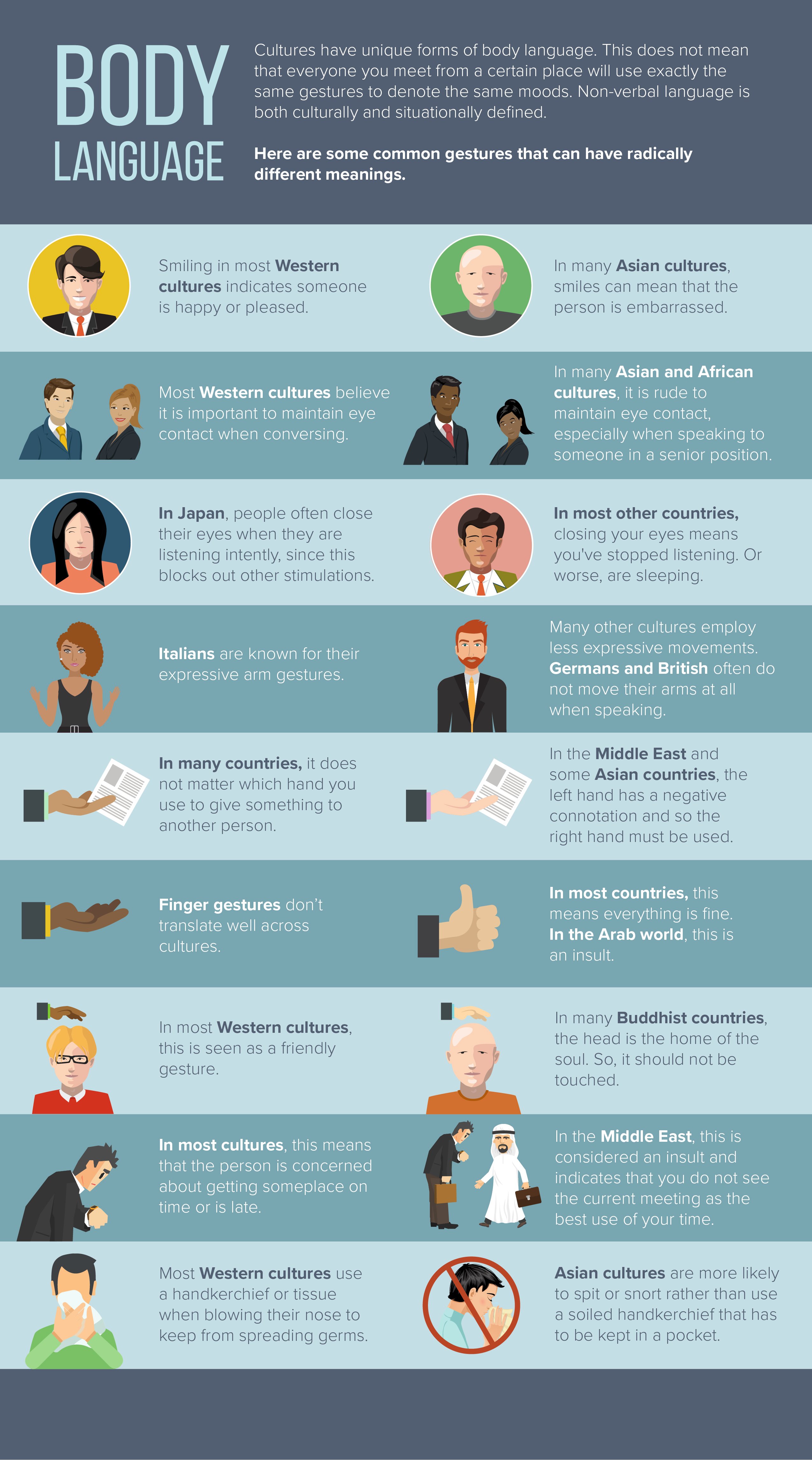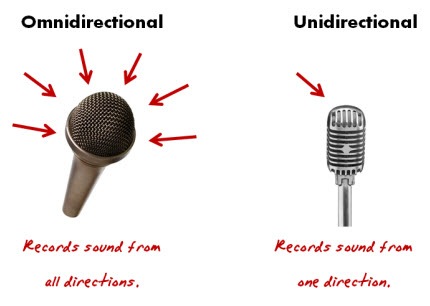Body Language In Different Cultures
If you’ve ever traveled to a different country, you may have noticed that people communicate not just with words, but with their bodies too. That’s right, we’re talking about body language in different cultures. It’s fascinating how gestures, facial expressions, and even posture can convey different meanings depending on where you are in the world. So, let’s dive into this captivating subject and explore how body language varies across cultures.
Imagine this: you’re walking down the street and see someone giving you a thumbs-up. In some countries, that’s a sign of approval and positivity, but in others, it can have a completely different meaning. It’s incredible how a simple hand gesture can vary so much from one culture to another. In fact, body language can reveal a lot about a person’s intentions, emotions, and cultural background.
Understanding body language in different cultures is not just interesting, it’s also essential for effective cross-cultural communication. By learning about these cultural differences, you can avoid misunderstandings and build stronger connections with people from around the world. So, get ready to discover the fascinating world of body language and how it shapes our interactions in diverse cultures. Let’s embark on this exciting journey together!
Understanding Nonverbal Communication in Different Cultures
Nonverbal communication varies across cultures, and understanding body language is crucial for effective cross-cultural interactions. Different cultures have unique gestures, facial expressions, and postures that convey distinct meanings. By familiarizing yourself with these differences, you can avoid misunderstandings and enhance your intercultural communication skills. Take the time to research and learn about the body language specific to the cultures you interact with, and adapt your own body language accordingly. Remember, communication goes beyond words!

Understanding Body Language in Different Cultures: A Guide to Cross-Cultural Communication
When it comes to communication, words are just a small part of the equation. Body language, expressions, gestures, and postures play a crucial role in conveying messages and understanding others. However, the way we interpret these non-verbal cues can vary greatly across cultures. In this article, we will explore the fascinating world of body language in different cultures and provide you with valuable insights to navigate cross-cultural interactions effectively.
Non-Verbal Communication in Different Cultures
Non-verbal communication is a universal language, but its interpretation is highly influenced by cultural norms and values. Let’s explore some key aspects of body language in different cultures:
America: The Land of Handshakes and Personal Space
In American culture, a firm handshake is a common greeting gesture and signifies confidence and sincerity. Maintaining proper personal space is also crucial – invading someone’s personal bubble may make them uncomfortable. Americans often use open body postures and maintain good eye contact to show engagement and interest.
On the other hand, direct physical contact such as hugging or kissing may be reserved for close friends or family members. Americans also tend to use a lot of hand gestures while speaking to emphasize their point, so it’s important to pay attention to these cues.
Japan: Respect, Harmony, and Indirect Communication
In Japanese culture, respect and harmony are highly valued. While bowing is the traditional form of greeting, handshakes are becoming more common, especially in business settings. However, it’s important to note that bows vary based on the level of respect or formality. A deeper bow shows more respect and is expected in formal situations.
Japanese communication is often indirect, and silence is considered valuable. Maintaining eye contact for extended periods may be seen as rude or confrontational. Use of hand gestures is minimal, and it’s advisable to keep your movements subtle and controlled to avoid coming across as boisterous or disrespectful.
India: Namaste, Head Bobbling, and Physical Contact
In Indian culture, the traditional greeting is “Namaste,” which involves placing your hands together in front of your chest and offering a slight bow. This gesture signifies respect and is widely used.
Indian body language may include a unique head bobbling gesture, which can be challenging for foreigners to interpret. The head bobble can convey various meanings depending on the context, ranging from agreement to confusion or acknowledgement. It is essential to pay attention to other non-verbal cues and the overall context to understand the intended message.
Physical contact, such as hugging or patting on the back, is common among close friends or family members. However, it’s essential to respect personal space and not initiate physical contact with someone you have just met, unless they initiate it first.
Russia: A Stoic Exterior and Warmth Amongst Friends
Russian body language is often characterized by a stoic exterior, with minimal facial expressions and fewer hand gestures compared to other cultures. Maintaining a serious and reserved demeanor is considered polite.
Once a deeper bond is formed, Russians tend to become warm and expressive with close friends. They are comfortable with physical contact such as hugging and cheek kissing when greeting friends or acquaintances. It’s important to note that the level of physical contact may differ based on region and individual preferences.
Arab Countries: Personal Space and Expressive Gestures
In Arab countries, personal space is respected, and it’s essential to maintain an appropriate distance while interacting with others. Avoiding physical contact with someone of the opposite gender who is not a family member is generally considered respectful.
Arab culture is known for its expressive gestures, including hand movements and facial expressions. These gestures are often used to emphasize key points in conversations. Understanding these gestures can help you better interpret the message being conveyed and avoid misunderstandings.
China: Politeness, Reserved Demeanor, and Concept of “Face”
In Chinese culture, politeness and respect are highly valued. Greetings are commonly accompanied by a slight nod or a handshake, especially in formal settings. Maintaining a reserved and calm demeanor is seen as a sign of self-control and respect.
In China, the concept of “face” plays a crucial role. “Saving face” and avoiding embarrassment are essential, so direct confrontation or overt displays of emotion are generally avoided. Non-verbal cues such as body postures and facial expressions are used to convey subtle messages and maintain harmony in social interactions.
Germany: Directness, Firm Handshakes, and Proper Punctuality
German culture values directness and honesty in communication. Handshakes are common and convey respect and professionalism. A firm handshake is appreciated, but it’s important to maintain eye contact while doing so.
Germans have a strong sense of punctuality, and being late is considered disrespectful. Arriving a few minutes early for meetings or appointments is a sign of respect. During conversations, Germans may use fewer hand gestures compared to other cultures, focusing more on verbal communication.
Benefits of Understanding Body Language in Different Cultures
As the world becomes more interconnected, understanding body language in different cultures has numerous benefits:
- Improved Cross-Cultural Communication: Understanding non-verbal cues helps us navigate cultural differences and communicate more effectively with people from diverse backgrounds.
- Building Stronger Relationships: Being aware of cultural body language norms allows us to build trust and establish positive connections with individuals from different cultures.
- Business Success: In the business world, knowledge of body language in different cultures can give us a competitive edge by facilitating successful negotiations, partnerships, and collaborations.
- Avoiding Misunderstandings: Misinterpretations of non-verbal cues can lead to misunderstandings or unintentional offense. Knowing the cultural context helps us avoid such pitfalls.
Tips for Navigating Body Language in Different Cultures
To navigate body language in different cultures effectively, consider the following tips:
- Research and Learn: Take the time to research and familiarize yourself with the cultural norms of the specific country or region you are interacting with.
- Observe and Adapt: Pay attention to non-verbal cues and adapt your own body language to align with the cultural expectations of the people you are interacting with.
- Avoid Stereotyping: Remember that body language can vary even within the same country or culture. Treat each individual as unique and be open to learning and adjusting.
- Ask for Clarification: If you are unsure about the meaning behind certain non-verbal cues, politely ask for clarification to avoid misunderstandings.
- Show Respect and Flexibility: Approach cross-cultural interactions with an open mind and a willingness to adapt your behavior to show respect and foster positive relationships.
Conclusion
Body language serves as a powerful tool for communication, but its interpretation varies across cultures. By understanding and respecting the body language norms of different cultures, we can bridge communication gaps, build stronger relationships, and foster cross-cultural understanding. Remember, effective communication goes beyond words, and the ability to interpret non-verbal cues can lead to meaningful and successful interactions in today’s globalized world.
Key Takeaways: Body Language in Different Cultures
- In France, maintaining steady eye contact is a sign of respect and attentiveness.
- In Japan, bowing is a common form of greeting and showing respect.
- In Italy, using hand gestures while speaking is a normal part of communication.
- In Saudi Arabia, it is important to avoid touching someone of the opposite sex, especially in public.
- In India, the Namaste gesture, placing hands together and bowing slightly, is a polite way of greeting.
Frequently Asked Questions
Welcome to our FAQ section on body language in different cultures. Below, we’ve answered some common questions to help you better understand how body language varies across different cultures and its significance in interpersonal communication.
1. How does body language vary across cultures?
Body language varies greatly across cultures due to differences in norms, values, and social customs. For example, while direct eye contact is considered respectful in Western cultures, it may be seen as rude or confrontational in certain Asian cultures. Similarly, hand gestures can have different meanings in different cultures. To navigate these differences, it’s essential to be aware of cultural contexts and adapt your body language accordingly when interacting with individuals from diverse backgrounds.
Understanding and respecting cultural differences in body language is crucial for effective communication, as it helps avoid misunderstandings and fosters positive interactions. With globalization and increased cultural exchange, being culturally sensitive and aware of body language norms has become increasingly important in today’s interconnected world.
2. What are some examples of body language differences in different cultures?
Body language differences can be seen in various aspects, such as gestures, facial expressions, posture, and personal space. For instance, in some cultures, nodding the head may indicate agreement or understanding, whereas in others, it may signify confusion or disagreement. Similarly, personal space preferences vary significantly across cultures, with some cultures valuing more proximity during interactions and others preferring more distance.
Hand gestures also have different meanings globally. For example, the okay gesture, commonly used to signify “okay” or “good” in Western cultures, can be offensive in some South American and Middle Eastern cultures. It’s important to be mindful of these differences to avoid unintentionally causing offense or misunderstanding when communicating with people from different cultures.
3. How can I adapt my body language when interacting with individuals from different cultures?
Adapting your body language when interacting with individuals from different cultures requires cultural awareness and sensitivity. It’s essential to observe and learn about the body language norms of the specific culture or cultures you are engaging with. Some tips for adapting your body language include:
– Observe and learn from locals: Pay attention to how people in the culture you’re interested in communicate nonverbally. Observe their gestures, facial expressions, and postures.
– Respect personal space: Be mindful of the preferred distance between individuals in different cultures and adjust your proximity accordingly.
– Use nonverbal cues cautiously: Understand that nonverbal cues may be interpreted differently across cultures. Consider the cultural context before using specific gestures or expressions.
Adapting your body language shows respect and promotes effective communication, helping to bridge potential cultural gaps and foster better understanding.
4. What are some common body language mistakes to avoid when interacting with people from different cultures?
When interacting with people from different cultures, it’s important to be aware of potential body language mistakes that could hinder effective communication. Some common mistakes to avoid include:
– Assuming universality: Avoid assuming that your own cultural body language norms apply universally. Always be open to learning and adjusting to different cultural practices.
– Making generalizations: Don’t make sweeping generalizations about a particular culture’s body language based on limited experiences or stereotypes. Remember that cultures are diverse, and body language norms can vary within them.
– Ignoring nonverbal cues: Pay attention to nonverbal cues from others, as they can provide valuable information about their feelings and intentions. Ignoring or misinterpreting these cues can lead to misunderstandings.
– Being overly rigid: While adapting to cultural norms is important, don’t become overly rigid or self-conscious about your body language. Genuine communication comes from a place of authenticity and mutual respect.
5. How can I improve my cross-cultural body language skills?
Improving your cross-cultural body language skills requires practice, observation, and open-mindedness. Some ways to enhance your skills include:
– Cultural immersion: Immerse yourself in diverse cultures, either through travel or by engaging with people from different cultural backgrounds. This allows you to learn firsthand about their body language practices.
– Cultural sensitivity training: Take advantage of cultural sensitivity training programs or workshops that provide insights into nonverbal communication practices across different cultures.
– Seek feedback: Ask for feedback from individuals who come from different cultural backgrounds. They can provide valuable insights into how you can improve your cross-cultural communication through body language.
By actively seeking to expand your knowledge and skills in cross-cultural body language, you can become a more effective and sensitive communicator in diverse settings.
The Secret Language of Culture: How Body Language Differs Across the Globe #Culturalawareness
Summary
Body language varies across cultures and can be misunderstood. In some cultures, eye contact is seen as respectful, while in others, it is considered rude. Similarly, hand gestures and personal space have different meanings, so we must be aware of these differences when communicating with people from different cultures. It’s important to be respectful and open-minded, and to learn about the body language norms in different cultures to avoid misunderstandings and promote effective communication.

